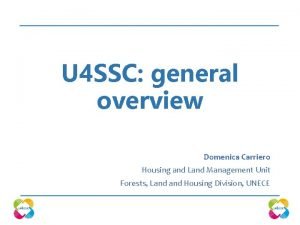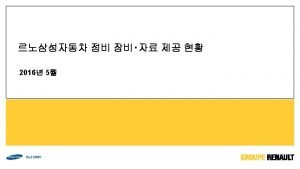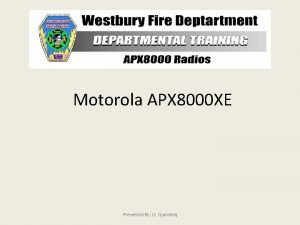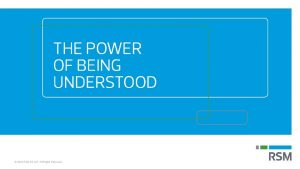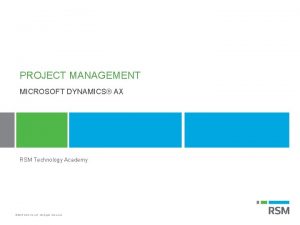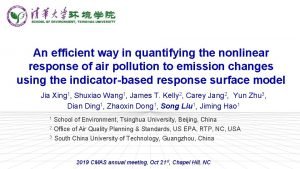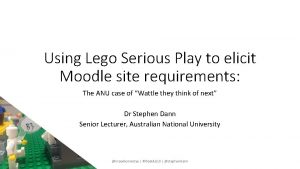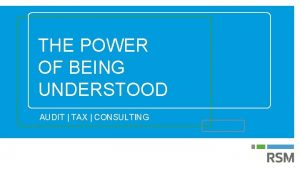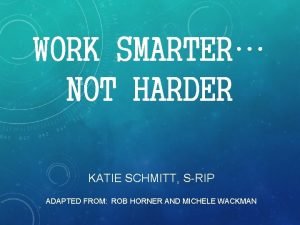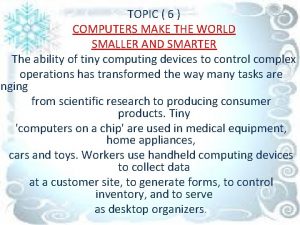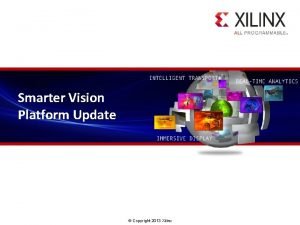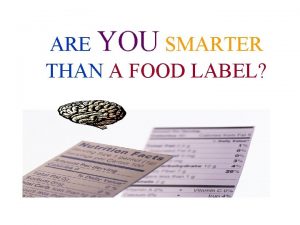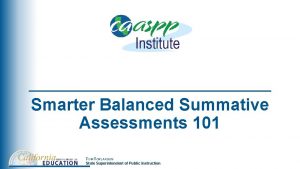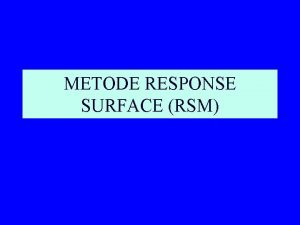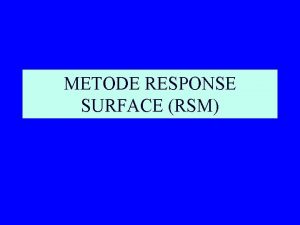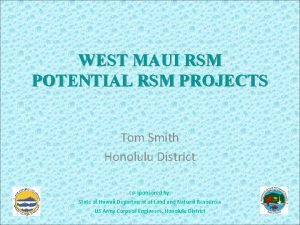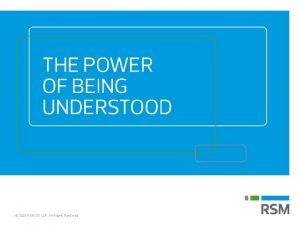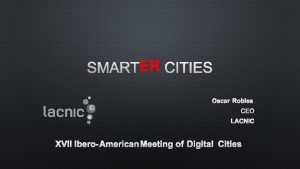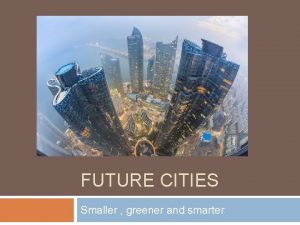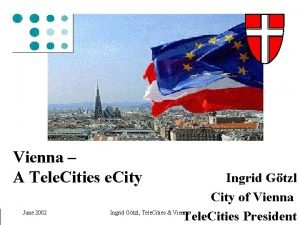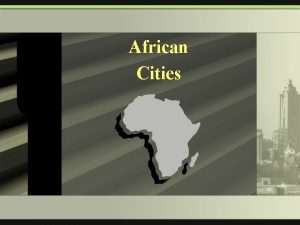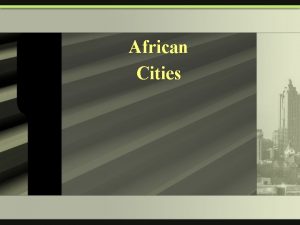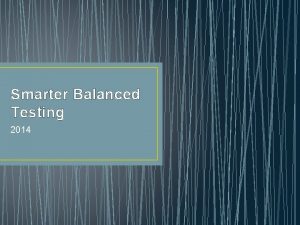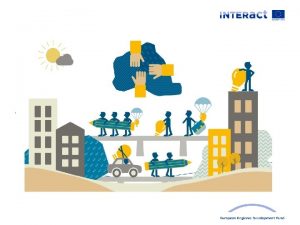A Dynamic Data Platform For Smarter Cities RSM























- Slides: 23

A Dynamic Data Platform For Smarter Cities RSM I 2 V Communication June 1, 2018 1 The Junction 2 GPS Challenges 3 RSM solution 4 More information

1 The Junction 2 GPS Challenges 3 RSM solution 4 More information

RSM is currently mapping a series of junctions within the Caltrans CV Testbed in Palo Alto 1 The Junction 2 GPS Challenges 3 RSM solution 4 More information

Upon completion RSM will have a lane by lane, detailed view of over 2. 5 miles of road 1 The Junction 2 GPS Challenges 3 RSM solution 4 More information

Challenge - how to communicate this new level of detail to vehicles 1 The Junction 2 GPS Challenges 3 RSM solution 4 More information

Currently RSM builds up a lane by lane view of an intersection with a range of 200 meters from the center. 400 metres RSM can integrate any loop detector, traffic signal or radar information into a single view and process that onto a map view of the junction or relay it to a vehicle equipped to receive it in near real-time. But how do we communicate this new super accuracy to GPS systems that are not? 1 The Junction 2 GPS Challenges 3 RSM solution 4 More information

2 GPS Challenges 1 The Junction 2 GPS Challenges 3 RSM solution 4 More information

How accurate is GPS? GPS satellites broadcast their signals in space with a certain accuracy, but what you receive depends on additional factors, including satellite geometry, signal blockage, atmospheric conditions and receiver design features/quality. For example, GPS-enabled smartphones are typically accurate within a 4. 9 m (16 ft. ) radius under open sky (view source at ION. org). However, their accuracy worsens near buildings, bridges, and trees. In short we currently cannot rely on GPS to deliver the lane level information required to accurately place the vehicle. For more information: https: //www. gps. gov/systems/gps/performance/accuracy/ 1 The Junction 2 GPS Challenges 3 RSM solution 4 More information

If RSM were to use GPS it may place the user in the wrong lane. At minimum causing driver confusion, at worst could lead to an accident. Other challenges include latency, communications lag between infrastructure and vehicle, and even vehicle size and position relative to the user. These multiple sources of confusion and error are unacceptable. 1 The Junction 2 GPS Challenges 3 RSM solution 4 More information

Garmin RSM must ensure that: 1. Data is in a format that can be easily understood by the end user 2. Data should be in a format that is intuitive and easy to understand Go Live 3. When I 2 V data is no longer available, the end user is returned to a view that they are accustomed to 1 The Junction 2 GPS Challenges 3 RSM solution Navmii 4 More information

3 RSM solution 1 The Junction 2 GPS Challenges 3 RSM solution 4 More information

1. Standard GPS view 2. Entering RSM view 3. RSM Information 4. Exiting RSM view The following breakdown is assuming the current limitations of GPS apps, which use a vector system and simplified graphics to display the barest information. As GPS improves we can increase the fidelity of our graphics accordingly. 1 The Junction 2 GPS Challenges 3 RSM solution 4 More information 5. Standard GPS view

1. Standard GPS view 2. Entering RSM view 3. RSM Information 4. Exiting RSM view An RSM-enabled I 2 V junction would provide the users a seamless transition from their current GPS view, to the RSM detailed view and back again to their GPS view. The following concept demonstrates the end user experience as they journey in and our of an RSM-enabled junction. 1 The Junction 2 GPS Challenges 3 RSM solution 4 More information 5. Standard GPS view

1. Standard GPS view 2. Entering RSM view 3. RSM Information 4. Exiting RSM view This vehicle has an RSM/ I 2 V app installed. As the end user approaches the intersection, the RSM interface will phase in and the road view will reduce in opacity. The standard vector road will be replaced by the individual lanes. The wider the lane, the greater the traffic. 1 The Junction 2 GPS Challenges 3 RSM solution 4 More information 5. Standard GPS view

1. Standard GPS view 2. Entering RSM view 3. RSM Information 4. Exiting RSM view The roads are color-coded based on traffic flow varying from green and thin for ideal route, to red and wide based on slowest moving lanes. Traffic signal cycles ahead are also shown as well as their duration and time remaining for the cycle. 1 The Junction 2 GPS Challenges 3 RSM solution 4 More information 5. Standard GPS view

1. Standard GPS view 2. Entering RSM view 3. RSM Information 4. Exiting RSM view As the user nears the signal the traffic cycle for each direction is shown. The blue dot shows the current time in the traffic cycle and the upcoming green. RSM will not show other vehicles or what lane they are in, even if possible. This would distract the driver. 1 The Junction 2 GPS Challenges 3 RSM solution 4 More information 5. Standard GPS view

1. Standard GPS view 2. Entering RSM view 3. RSM Information 4. Exiting RSM view As the user approaches the intersection the traffic signals are displayed above each relevant lane. The right turn is not shown in this case, however if there was a pedestrian crossing it would also have its own cycle. Once the driver passes the intersection, the traffic signal icons fade away. 1 The Junction 2 GPS Challenges 3 RSM solution 4 More information 5. Standard GPS view

1. Standard GPS view 2. Entering RSM view 3. RSM Information 4. Exiting RSM view As the user leaves the I 2 V area, the RSM view begins to fade away. Once the user has passed the threshold of the RSMenabled I 2 V zone, the view returns to it’s original GPS view. 1 The Junction 2 GPS Challenges 3 RSM solution 4 More information 5. Standard GPS view

1. Standard GPS view 2. Entering RSM view 3. RSM Information 4. Exiting RSM view The following video shows all the steps in sequence as it would appear in a GPS app. 1 The Junction 2 GPS Challenges 3 RSM solution 4 More information 5. Standard GPS view

4 More information 1 The Junction 2 GPS Challenges 3 RSM solution 4 More information

For more information on RSM and SIMON please visit: www. rsm. ie 1 The Junction 2 GPS Challenges 3 RSM solution 4 More information

For more videos showing RSM technologies, please visit: https: //vimeo. com/rsmtechnologies 1 The Junction 2 GPS Challenges 3 RSM solution 4 More information

 Global platform for sustainable cities
Global platform for sustainable cities Rsm portal
Rsm portal Apx8000xe
Apx8000xe Rsm seattle
Rsm seattle Dynamics nav memphis
Dynamics nav memphis Rsm
Rsm Rsm cyber security
Rsm cyber security Moodle rsm
Moodle rsm Power of being understood
Power of being understood What is static and dynamic data structure
What is static and dynamic data structure Transferered
Transferered Working smarter matrix
Working smarter matrix Computer make the world smaller and smarter
Computer make the world smaller and smarter Smarter vision
Smarter vision Smarter charts
Smarter charts Smarter 2030
Smarter 2030 Work smarter, not harder essay
Work smarter, not harder essay Ibm smarter planet case study
Ibm smarter planet case study Are you smarter than a food label
Are you smarter than a food label Are you smarter than sam questions
Are you smarter than sam questions Ibm smart supply chain
Ibm smart supply chain Http://www.caaspp.org
Http://www.caaspp.org Making smart contracts smarter
Making smart contracts smarter Let's build a smarter planet
Let's build a smarter planet
